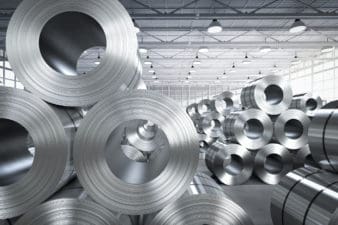Gold has pulled back sharply in recent weeks, as tensions in Northeast Asia cool and optimism surrounding the outlook for the global economy grows. The yellow metal is now trading well below the psychologically important US$1,300 per ounce barrier and has sparked weakness among gold miners.
Nevertheless, rising tensions in the Middle East, Trump’s increasing pressure on Iran, and the likelihood of the political crisis on the Korean peninsula erupting yet again mean that the prospect of gold rallying sharply remains high. This is because gold is viewed as the ultimate store of value that can’t be debased and is negatively correlated to the growth assets such as stocks, making it an unsurpassed safe-haven investment.
These risks, and others, combined with gold’s recent weakness make now the time for investors to boost their exposure to the yellow metal. One of the best means of doing so is by investing in intermediate gold miner Kirkland Lake Gold Ltd. (TSX:KL)(NYSE:KL), which has pulled back sharply in recent weeks.
Now what?
While Kirkland Lake has more than doubled in value for the year to date, there is still considerably more upside on offer for investors, especially if gold firms once again. It has reported some impressive results over the last year, and it is set to report more strong results for the third quarter 2017. Quarterly gold production grew 4% year over year and is on track to achieve its forecast 2017 production of 570,000-590,000 ounces, which is 5-9% higher than 2016. Along with higher gold prices over the course of the year, that will give Kirkland’s earnings a healthy lift.
In fact, I would expect Kirkland Lake’s third-quarter earnings to improve compared to the second quarter, because not only has production risen, but the average price of gold over the quarter was 5% higher than the same quarter in 2016.
The primary driver of higher gold production is higher ore grades, notably at its Australian Fosterville and its Macassa mine in Ontario. For the third quarter, ore grades at Fosterville more than doubled compared to the year earlier, while at Macassa they improved by 20%. Those improved ore grades combined with the miner’s ongoing focus on costs and implementing efficiencies at its mines should see costs remain low. For the second quarter 2017, Kirkland Lake reported all-in sustaining costs of US$729 per ounce, which are among some of the lowest in the industry.
You see, the higher the grade of the ore being mined, the more economical it is to extract the gold, meaning that typically those miners that own mines with higher average grades have lower operating expenses. The ore grades at its Macassa and Fosterville properties have been some of the miner’s key strengths in comparison to its peers.
There is also considerable exploration upside available from those mines. This is quite apparent when considering that in June 2017, the gold reserves for its Fosterville mine more than doubled when compared to the end of 2016.
Kirkland Lake also maintains a healthy financial position, finishing the third quarter with cash totaling US$210 million, and it had repaid US$44 million in debt by the end of the second quarter.
So what?
Kirkland Lake has to be one of the best intermediate gold miners available because of its portfolio of high-quality assets, growing production, and low costs. While its stock has appreciated significantly in recent months, it remains attractively priced, especially after the latest pullback. Along with the considerable economic and political fissures that exist globally, this makes it the ideal hedge against uncertainty.








